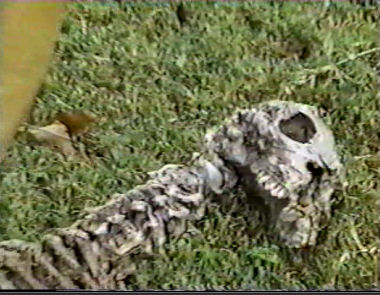|
|
The
Platinum Cannon Shipwreck |
|
| Joe
Champion | David
Hudson(semi-technical lecture) | David
Hudson(made easy) | 20th
Century Alchemy(3 Chapters)
|
| The Platinum Cannon Shipwreck | The Mango Metal Report(3 chapters) | Bookstore | |
|
From this point forward, things started to come apart within the University's evaluation of the science. The first major mass failures in transmutation started to appear. When Monti returned, without my presence, the tests would work. When Dr. Lin measured for radioactive decay, it was present (the presence of new radioactive decay indicates the definite formation of new isotopes--transmutation) . However, when Dr. Bhardwaj worked alone or in concert with others, the results frequently failed. He frequently followed a failed test with the typical statement, "I told you so, Dr. Bockris! It does not work!" With the stigma of the past--the incarceration of Dr. Becker and the numerous other stories involving persecution of scientists and miners by governments and other interests caused me to suspect Dr. Bhardwaj of possibly being influenced by opposing group to commit "lax procedures" in the conduct of the experiments. I do not think he could shrink to outright sabotage. Also, information which tended to confirm my suspicions came f rom two sources. The information was that Dr. Bhardwaj was a Government agent for a well known U.S. agency. The first disclosure came from his colleague, Dr. Lin, and sometime later I received corresponding information from Mr. Richard Boswell, Caleb International Investigations, Huntington Beach, California. The following is a review of the University's evaluation results through December, 1992, as provided me by Texas A&M: TEXAS A&M TEST SUCCESS RATE
During the later portion of the Texas A&M testing program, I established an independent program with Mid-States Recycling Inc, Rosemont, Illinois. Under the direction of Mr. Ellis Brown and their metallurgist, Mr. Don Patel, Monti and I developed new procedures. The two of us were present during the f irst four tests, then we excused ourselves to prevent any potential claims of self-contamination of our own experiments. As recorded, MidStates had over 35 successful production runs in which gold, platinum and palladium were produced. When Drs. Bhardwaj and Lin conducted an experiment there, the experiment failed. Somehow, the silicon oxide was omitted, an essential ingredient! The only failure known to me at Mid-States had Dr. Bhardwaj involved. This test was added to the record at Texas A&M University. An important question was, "Will the reaction upscale? Can we use larger batches of mixtures and achieve correspondingly greater results?" Another series of experiments were accomplished, and are still in progress. These experiments raised the starting matrix from approximately 1,800 grams to 3,000 grams. The experiments quoted now are the only ones accomplished within Mid?States Recycling facilities. They do not reflect on several previous experiments where the analysis of those experiments were not certified by recognized facilities. The increase in weight of the starting matrix indicates that the production accelerates at a (x) (unknown expotenial) rate greater than the projected rate one would expect. This can be accounted by the fact the transmutation cycle, the resonance nuclear reaction, lasts for a longer period. From experience gained during my first research trip to Mexico, I was able to determine that a major phenomena had occurred. The larger the reaction, reactions using greater than 15 kilograms of material, the lower the production. After detailed analysis, it was apparent that the transmutation cycle was of such length the starting matrix transmuted to the precious metals, then proceeded to continue to transmute to elements less than precious. To prevent this occurrence for the positive energy transmutations, it is necessary to add to the starting matrix the metals you wish to acquire in the process. The purpose of this is simple. The resonance qualities of the metals that were added act as a stopping agent in the process. To understand completely, it is necessary to refer to the similarity of the nuclear magnetic resonance qualities of the starting and ending isotopes. The experimental data collected
during the previous three years allows empirical validation that not
only can precious metals be synthesized from a nuclear reaction in the
"cold" (without a high energy nuclear reaction), but can be
produced economically.
|
|
|
| Joe
Champion | David
Hudson(semi-technical lecture) | David
Hudson(made easy) | 20th
Century Alchemy(3 Chapters)
|
| The Platinum Cannon Shipwreck | The Mango Metal Report(3 chapters) | Bookstore | |
|
Copyright©2014
Globe Merchant |

